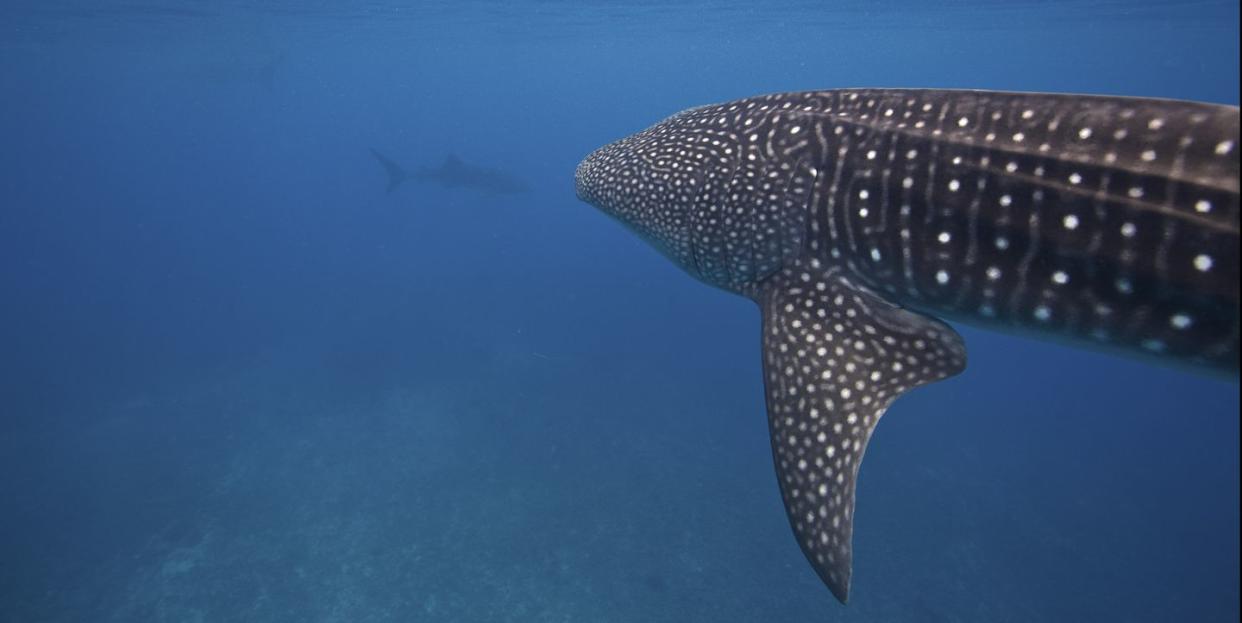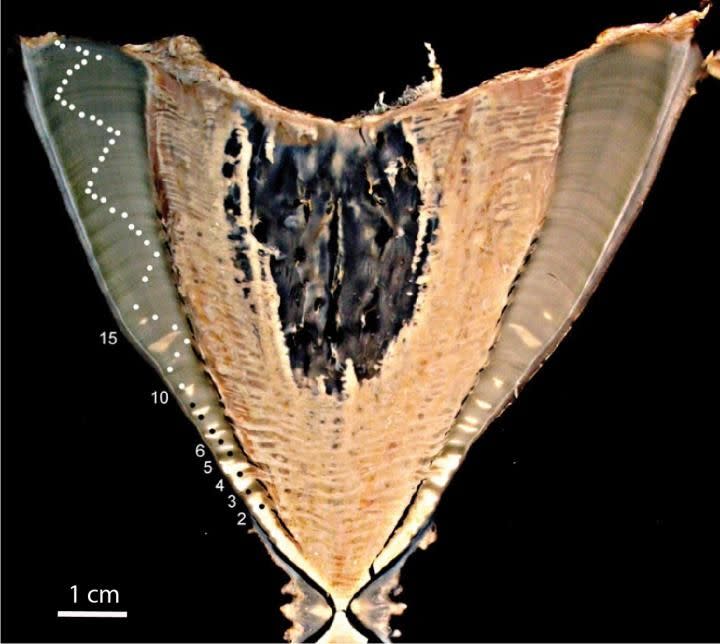Could Atomic Weapons from the Cold War Save the World's Largest Fish?

Scientists have discovered that measuring Carbon-14 in the growth bands of a whale shark vertebra can help pinpoint the fish's age.
Whale sharks are the largest fish in the sea, sometimes stretching up to 40 feet.
Understanding the lifespan of whale sharks, which are endangered, can help marine biologists better plan conservation efforts.
Calculating the age of a whale shark is a tough job—not because of their hefty size, but because they lack a very specific bone that gives scientists clues about their age.
Whale sharks are the largest fish in the world and can stretch up to 40 feet in length. They primarily feast on fish and plankton and are known for their docile behavior.
Though you can find whale sharks in almost all tropical seas and can often spot them in waters off the coast of Mexico, the Philippines, and Australia, the gargantuan mammals are endangered. Understanding how long they live can help marine biologists find ways to protect the species.
For years, scientists have used an inner ear bone called an otolith to estimate the lifespan of fish. Along with skates, rays, and other sharks, whale sharks belong to a group of cartilaginous fish called elasmobranchs, which do not have this bone.
Now, scientists from the U.S., Australia, and Iceland have discovered an explosive new way to estimate the age these gigantic creatures.
The U.S., Soviet Union, Great Britain, France, and China all tested their fleets of nuclear weapons in the 1950s and 1960s. Radioactive fallout from these tests permeated the atmosphere and the oceans, leaving its chemical fingerprint, an isotope called Carbon-14, in nearly every living thing.

Carbon-14 decays at a steady rate, meaning the radioisotope is a useful tool for estimating ages of objects. Scientists have used it to calculate the ages of archaeological artifacts, bone, and other carbon-based objects.
Typically, Carbon-14 is a useful tool for estimating the ages of objects between 300 and about 60,000 years old, but because of the nuclear fallout generated during the Cold War, the radioisotope can help date younger objects.
Of course, snagging the vertebrae of a whale shark is no small task. Often, the bodies of large these large creatures sink down the seafloor, where they become food for benthic critters. The team analyzed the skeletal remains of two species, one stored in Pakistan and another stored in Taiwan. Like counting tree rings, the researchers counted markings on the vertebrae of the whale shark specimens and found a striking pattern.
"We found that one growth ring was definitely deposited every year," marine biologist Mark Meekan, of the Australian Institute of Marine Science, said in a statement. By measuring how much Carbon-14 was in each growth ring, the scientists could calculate its age. Older whale sharks will therefore have less and less Carbon-14. T
The evidence suggests whale sharks could live anywhere from 100 to 150 years old, Meekan told the BBC. He and his colleagues published their work in the journal Frontiers in Marine Science.
"This is very important, because if you over- or under-estimate growth rates you will inevitably end up with a management strategy that doesn't work, and you'll see the population crash," Meekan said.
You Might Also Like


